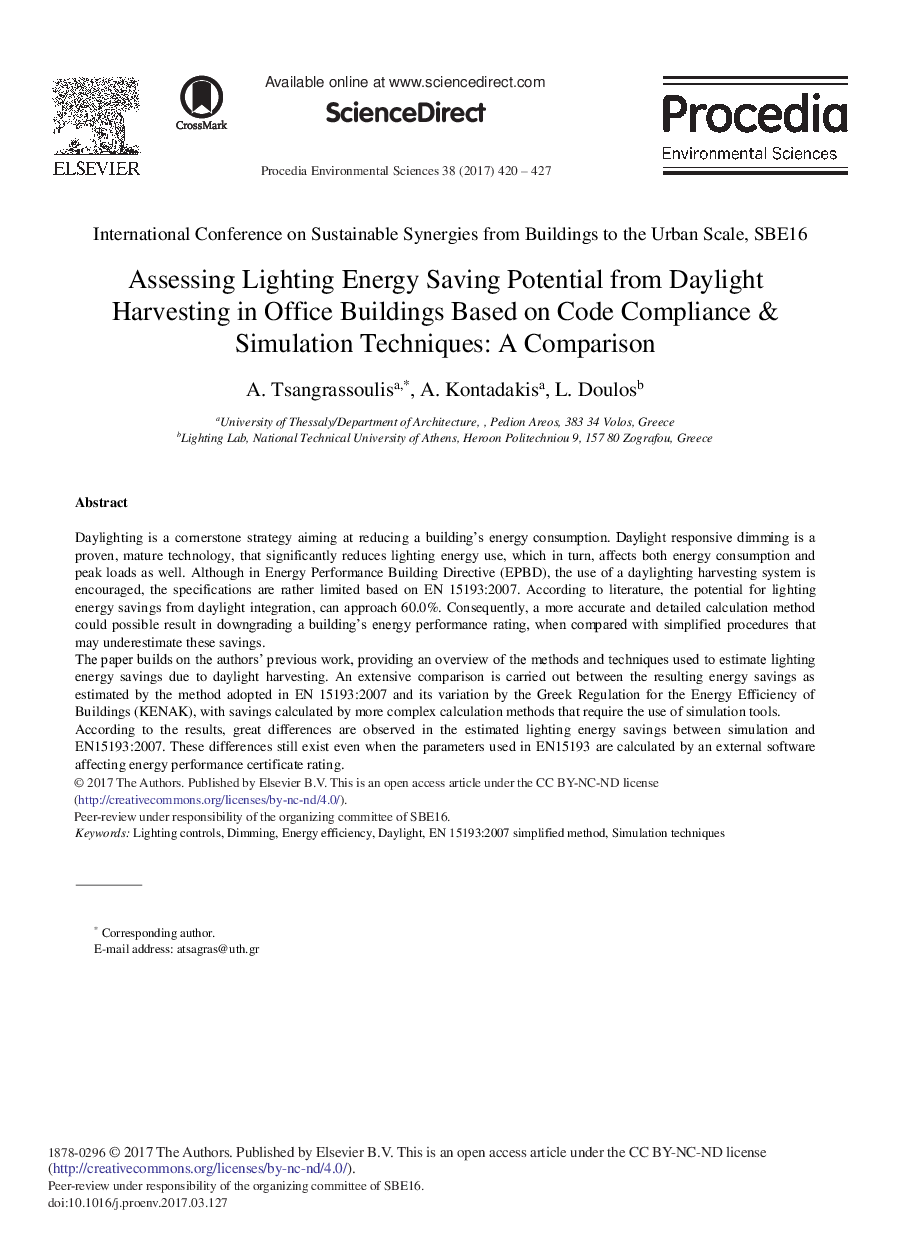| Article ID | Journal | Published Year | Pages | File Type |
|---|---|---|---|---|
| 5745058 | Procedia Environmental Sciences | 2017 | 8 Pages |
Daylighting is a cornerstone strategy aiming at reducing a building's energy consumption. Daylight responsive dimming is a proven, mature technology, that significantly reduces lighting energy use, which in turn, affects both energy consumption and peak loads as well. Although in Energy Performance Building Directive (EPBD), the use of a daylighting harvesting system is encouraged, the specifications are rather limited based on EN 15193:2007. According to literature, the potential for lighting energy savings from daylight integration, can approach 60.0%. Consequently, a more accurate and detailed calculation method could possible result in downgrading a building's energy performance rating, when compared with simplified procedures that may underestimate these savings.The paper builds on the authors' previous work, providing an overview of the methods and techniques used to estimate lighting energy savings due to daylight harvesting. An extensive comparison is carried out between the resulting energy savings as estimated by the method adopted in EN 15193:2007 and its variation by the Greek Regulation for the Energy Efficiency of Buildings (KENAK), with savings calculated by more complex calculation methods that require the use of simulation tools.According to the results, great differences are observed in the estimated lighting energy savings between simulation and EN15193:2007. These differences still exist even when the parameters used in EN15193 are calculated by an external software affecting energy performance certificate rating.
